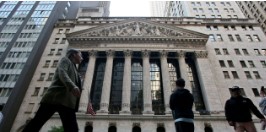Rising Geopolitical Tensions
Rising Geopolitical Tensions: Tom Essaye Quoted in Morningstar
Dow, S&P 500 flip positive to start week after Hamas attacks Israel
The attack by Hamas on Israel raised fears of a broader conflict, sending crude prices jumping. And spurring haven-related support for gold, the dollar and U.S. Treasury futures. The cash Treasury market is closed for the Columbus Day and Indigenous Peoples Day holiday.
“The human tragedy and geopolitical implications aside, from a market standpoint the attack matters because rising geopolitical tensions mean higher oil prices and the higher oil goes, the stronger the additional headwind on stocks and bonds,” said Tom Essaye, founder of Sevens Report Research, in a Monday note.
Also, click here to view the full Morningstar article published on October 9th, 2023. However, to see the Sevens Report’s full comments on the current market environment sign up here.
Lastly, If you want research that comes with no long term commitment, yet provides independent, value added, plain English analysis of complex macro topics, then begin your Sevens Report subscription today by clicking here.
To strengthen your market knowledge take a free trial of The Sevens Report.
Join hundreds of advisors from huge brokerage firms like Morgan Stanley, Merrill Lynch, Wells Fargo Advisors, Raymond James, and more! To start your quarterly subscription and see how The Sevens Report can help you grow your business, click here.







